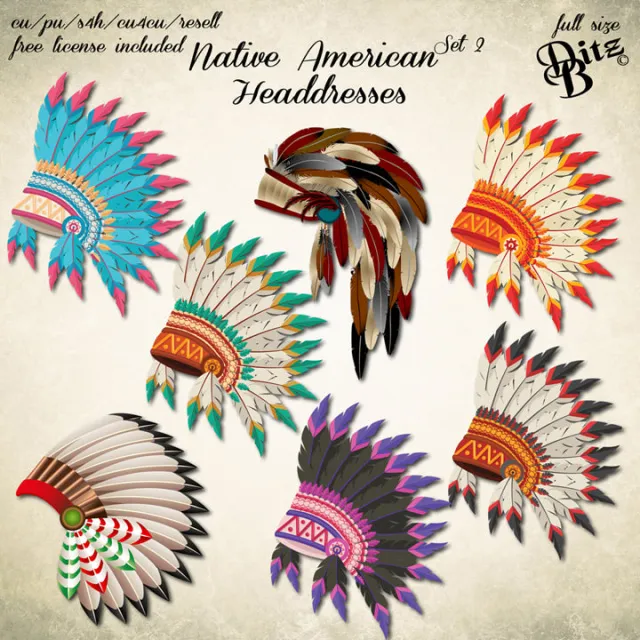Explore the rich cultural tapestry of Native American tribes through their diverse and symbol-laden headdresses. Each tribe has crafted unique headpieces, from the authoritative Warbonnet to the beauty-celebrating Feather Headbands.
These headdresses are not mere adornments; they embody tradition, artistry, and history. Journey through the indigenous cultures of North America, one headdress at a time, as Native American Clothes uncover the Types of Native American Headdresses from Various Tribes, each with its own distinct story and significance.
What is the Native American headdress called?
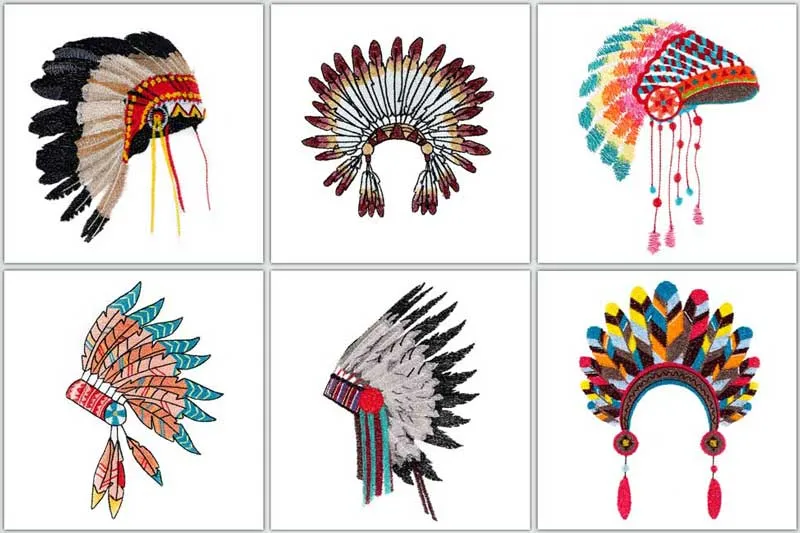
War bonnets, also known as warbonnets or headdresses, hold a place of unparalleled significance in the rich tapestry of Native American Plains Indian culture. These feathered headgear pieces are steeped in history and have evolved from their original use in battle to becoming iconic symbols of prestige and tradition.
A journey through the vibrant world of war bonnets as we explore their deep-rooted cultural importance and the evolution of their role in Native American and First Nations communities.
The Origin of War Bonnets
To understand the profound meaning behind war bonnets, we must delve into their origins. Traditionally, these ornate headdresses were worn by male leaders of the American Plains Indian Nations. However, their initial purpose extended beyond mere adornment; they were once donned by warriors heading into battle. These war bonnets were more than just accessories; they symbolized valor, honor, and a warrior’s commitment to safeguarding their tribe.
The Transformation into Ceremonial Icons
Over time, the significance of war bonnets shifted from the battlefield to ceremonial occasions. In the Native American and First Nations communities that have historically treasured these regalia items, they hold immense spiritual and political importance. Today, war bonnets are regarded as sacred symbols, worn only by those who have earned the right and honor through formal recognition by their people.
The Craftsmanship Behind War Bonnets
The creation of a war bonnet is a meticulous process that demands exceptional craftsmanship. Each feather is carefully selected, reflecting the vibrant hues of the natural world. The arrangement of these feathers is a work of art in itself, often incorporating intricate beadwork, leather, and other materials to create a stunning headdress that tells a story of tradition and reverence.
The Role of War Bonnets in Contemporary Culture
While the era of battle has passed, the legacy of war bonnets endures. In modern times, these headdresses continue to be an integral part of Native American and First Nations ceremonies and rituals. They serve as a reminder of the valor and dedication of their wearers, honoring their commitment to their communities.
What is the most famous headdress?
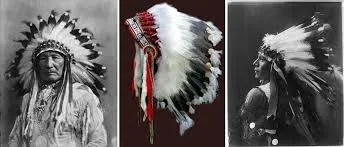
The Nemes headdress, an iconic symbol of ancient Egyptian royalty, has captured the imagination of historians and fashion enthusiasts alike. This stiff linen headcloth, adorned with vibrant colors, holds a prominent place in the annals of Egyptian history and culture. Join us on a journey through time as we explore the significance, symbolism, and enduring legacy of the Nemes headdress.
The Nemes Headdress: A Regal Attire
A Colorful Frame for Royalty
The Nemes headdress was more than just an accessory; it was a regal statement. This stiff linen headcloth covered the head, featuring flaps that gracefully hung down the sides and over the shoulders. What set the Nemes headdress apart was its resplendent array of bright colors. It framed the face and is famously associated with King Tutankhamun, who ruled Egypt in the fourteenth century B.C.E. The discovery of his gold casket in 1922 brought this remarkable headdress into the global spotlight.
An Emblem of Pharaohs
The Nemes headdress was not worn by mere mortals; it was exclusively reserved for pharaohs. Its distinctive appearance featured stripes and vibrant dyes, reflecting the grandeur of ancient Egyptian royalty. The headdress was a powerful symbol of a pharaoh’s divinity, with the ‘uraeus,’ or sacred serpent, adorning the front.
The linen was meticulously crafted into rounded tapers, starched into rigid flanges that cascaded forward onto the shoulders, and pulled into a queue at the nape of the neck, resembling the lion’s tail of sovereignty.
A Glimpse into the Past
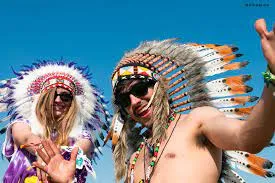
Hollywood and Ancient Egyptian Costume
Many of us are familiar with ancient Egyptian costume through Hollywood interpretations, where the Nemes headdress remains the most recognizable style. The linen headdress, with its distinctive stripes, was a hallmark of Egyptian royalty.
Surviving renditions of the fabric included variations such as white with single-colored stripes, occasional solid white, or even gold thread weaves with intricate goffering. One of the most iconic representations of the Nemes headdress can be found in the gold mummy mask of Tutankhamun, adorned with blue stripes made of inlaid lapis lazuli.
Tutankhamun’s Radiant Headdress
Pharaoh Tutankhamun, the ruler of both the Old and New Kingdoms, stands out prominently in history, thanks in part to his Nemes headdress. Depicted with the uraeus and vulture emblems at his forehead, he embodies the regal aura associated with this headdress. The burial mask of Tutankhamun beautifully showcases the vivid colors and exquisite craftsmanship of the Nemes headdress.
The Symbolic Lion’s Tail
The Nemes headdress was more than a fashion statement; it bore profound symbolism. Often described as a scarf-like construction, it completely covered the head, extended gracefully across the temples, hung down to the shoulders behind the ears, and featured a long tail at the center back. This symbolic tail was likened to a lion’s tail, signifying strength and sovereignty.
Which tribes wear war bonnets?
War Bonnets, known as “War Bonnets” in English, stand as a symbol deeply intertwined with the Native American heritage. These feathered headdresses evoke images of majesty and tradition. In this exploration, we journey into the origins, symbolism, and cultural significance of these iconic adornments.
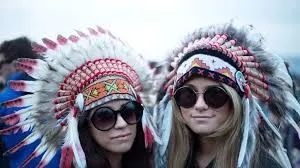
The Plains Indians and the War Bonnet Tradition
Symbols of Power and Prestige
Among the Sioux, Crow, Blackfeet, Cheyenne, and other tribes of the Plains Indians, the War Bonnet was not a mere accessory—it was a symbol of profound power and authority. Reserved for Native American men of esteemed status, such as village chiefs and revered warriors, these headdresses embodied pride and honor.
A Tribute to the Great Spirit
The essence of the War Bonnet lies in its composition. Crafted from eagle feathers, an emblematic creature in Native American culture symbolizing the connection with the Great Spirit, these feathers are meticulously embedded in bone sockets. The headbands, adorned with colored glass beads, add a touch of vibrancy to these remarkable creations.
Unique Creations, Unique Wearers
Each War Bonnet tells a unique story. The distinctiveness of these headdresses stems from both the craftsmanship of their creators and the individuals who wear them. From the arrangement of feathers to the choice of colors, every detail holds meaning and significance.
The Significance of the Number 28
The classic design of a War Bonnet often features 28 feathers. This number carries profound importance in Native American culture. It appears in various aspects of life, underscoring its significance. For instance, the buffalo, a revered creature, has 28 ribs, and the moon takes 28 days to complete its cycle. This number weaves a rich tapestry of meaning into the very fabric of Native American existence.
Modern-Day Reverence
While the War Bonnet tradition has deep historical roots, it continues to thrive in the modern era. Feather headdresses are donned during significant ceremonies and official journeys, keeping the tradition alive and relevant in contemporary Native American culture.
Explore Native American Headdresses
Our collection of Native American headdresses, available in the Decorations section at Harpo, is a testament to the enduring craftsmanship and cultural heritage of the Navajo craftswomen who create them. These headdresses serve as a bridge between the past and the present, allowing us to honor and appreciate the rich legacy they represent.
Types of Native American Headdresses from Various Tribes
Diversity, tradition, and symbolism—these are the cornerstones of Native American headdresses. Each tribe across the vast expanse of North America has woven its unique narrative into these captivating headpieces. In this journey, we delve into the rich tapestry of Native American headdresses, each telling a story of heritage and identity.
The Trailblazing Warbonnet

A Cascade of Eagle Feathers
Tribes like the Sioux, Blackfeet, Crow, Plains Cree, and Cheyenne donned Warbonnets, headdresses that featured rows of eagle feathers cascading in a long trail down to the feet. This remarkable length, however, rendered them unsuitable for battle, as swift movements became impractical.
Beyond Feathers: Adornments of Ermine Skins
Warbonnets weren’t merely feathered arrangements; they were adorned with ermine skins and intricate beadwork. Some featured feathers painted with red pigment, celebrating extraordinary feats. These headdresses were reserved for esteemed figures like chiefs and notable medicine men within specific tribes, highlighting their vigor and wisdom.
The Majestic Straight-up Feathered Headdress
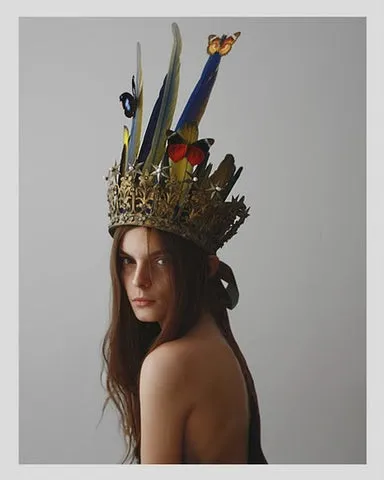
A Narrower, Taller Elegance
A distinct variant, the straight-up feathered headdress, stands taller and narrower, with its eagle feathers proudly upright. Unlike the Plains Indians, for whom the headdress holds sacred significance and symbolizes valor, newer tribes view it differently.
The Alluring Halo Warbonnet
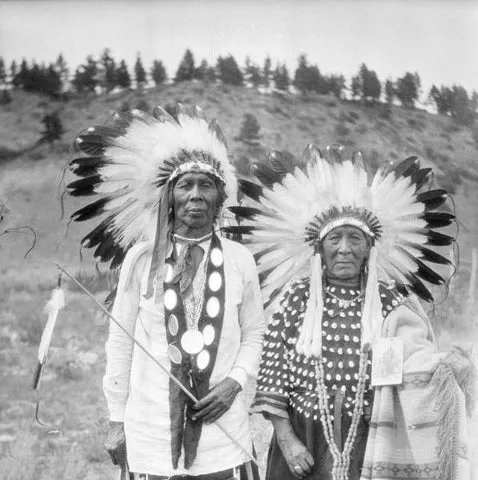
A Frame of Feathers
The Halo Warbonnet, characterized by its oval shape and feathers fanning out around the face, is an exquisite accessory that transcends cultural boundaries. It frames the wearer’s face, accentuating their features, akin to the majestic display of a peacock’s tail or a lion’s commanding mane. However, beneath its aesthetic allure lies a captivating history, often worn by those regarded as legends.
Fur Turban: An Intricate Ritual Headdress
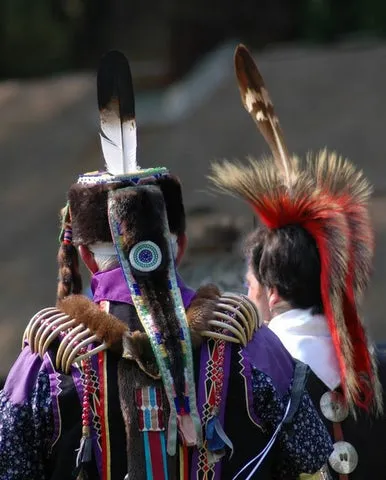
Crafted from otter fur, fur turbans or otter-skin caps are adorned with the otter’s tail, which may hang behind or extend to one side within a beaded sheath. These ritual headdresses are worn by men in select Prairie and Southern Plains tribes, such as the Osage, Potawatomi, and Pawnee.
The turbans and tail sheaths are intricately embellished with beaded and painted imagery, symbolizing war feats. Chiefs and their bloodlines attach eagle feathers to the back of their turbans for ceremonies and spiritual occasions.
Feather Headband: A Unique Elegance
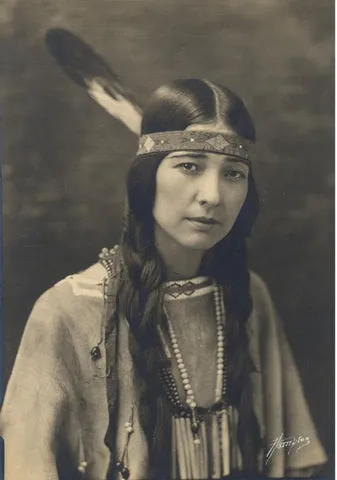
While a pigeon-hole for some Indian women, feather headbands are worn by a few tribes in the northeast Woodlands. These headbands, adorned with quillwork, creative patterns, wampum, and beads, serve as decorative accessories rather than symbols of war. Woodland Indian headbands feature finger-woven or beaded deerskin strips with tribal designs, secured around the temples with eagle, hawk, crane, or egret feathers.
Aztec and Mayan Headdresses: A Festive Affair

Distinct from typical war regalia, Aztec and Mayan Native American headdresses are worn for their splendor. These headdresses, characterized by colorful feathers from macaws, parrots, and quetzals, are secured to the back of the head with straps or a metallic circlet. Adorned with jewels, jade stones, and gold, they shine brightly during celebrations like the Mardi Gras.
Roach Headdress: A Pop Culture Icon
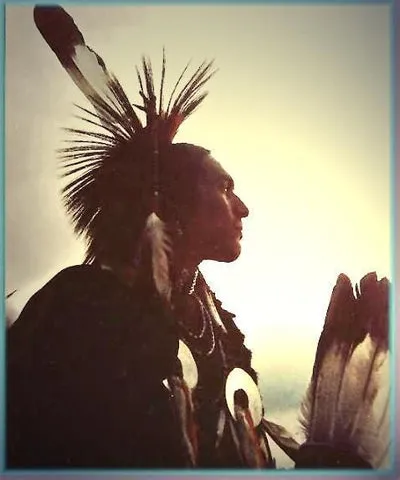
While feather headdresses have gained popularity in pop culture, roach headdresses, or porcupine roaches, hold a prominent place in Native American traditions. Comprising stiff moose hair, porcupine guard hair, and deer’s tail hair, these headdresses are affixed to a bone hair embellishment or leather base, standing upright like a crest.
Derived from the terms “Mohawk” or “Mohican,” roaches are often linked to the wearer’s hair, adorned with feathers, shells, and other embellishments.
Buffalo Headdress: A Rare and Honorable Adornment
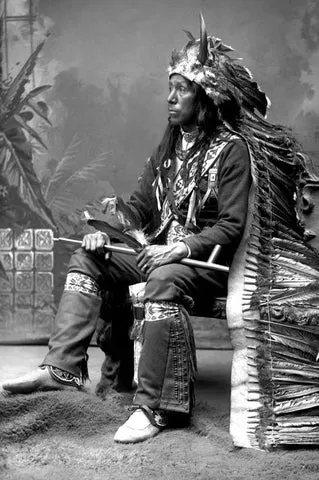
Worn exclusively by the Sioux and a few tribes from the northern Plains, the buffalo headdress is rarer than its feathered counterparts. It is reserved for warriors of specific clans who have achieved remarkable deeds. Featuring intimidating bull horns symbolizing animal embodiment, these headdresses are further adorned with shaggy buffalo fur, culminating in a feather trail that extends to the ankle.
Basket Headdress: A Unique Craft from the West
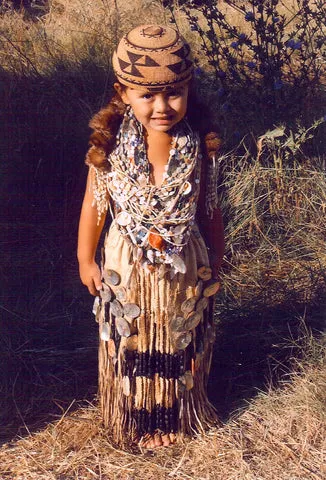
Basket headdresses, crafted from tightly coiled sumac, originate from tribes in the west of the Rocky Mountains. Both men and women from Northwest Coast tribes like the Haida and Salish wear these unique hats for ceremonies, dance regalia, and everyday life. These one-of-a-kind hats often take on conical or brimmed shapes, woven from fibers like cedar bark or spruce roots.
Indian American Masks: A Masked Tradition
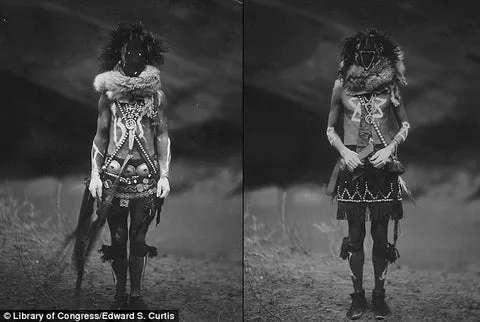
Across Native American tribes from Alaska to Argentina, a fascinating array of masks emerges. These tribes carve masks from wood, draping them with leather and fur. While Plains Indians commonly craft animal masks from bull, bear, buffalo, or wolf skulls, some tribes, such as the Tuscarora and Seneca, treat face masks as sacred rituals, preventing any photography.
A Debate: Embracing the Headdress
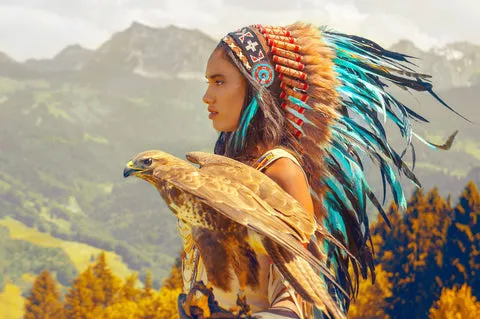
As captivating as they appear and as much as we yearn to embody their essence, the debate over wearing these headdresses endures. These remarkable headpieces have animated Native American culture from its inception to the present day, continually mystifying us. They represent a piece of history that has shaped our collective identity.
Learn more about: How To Make A Native American Headdress

